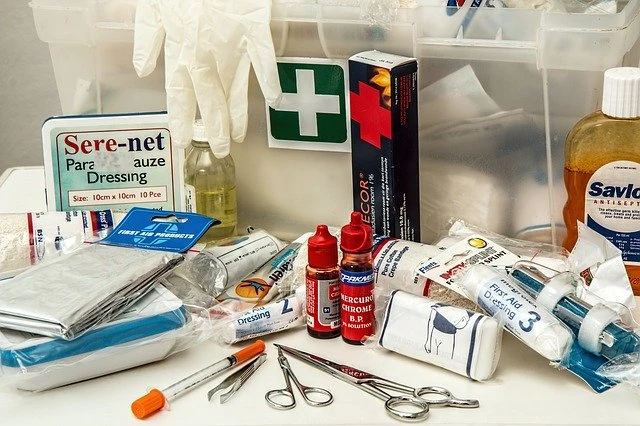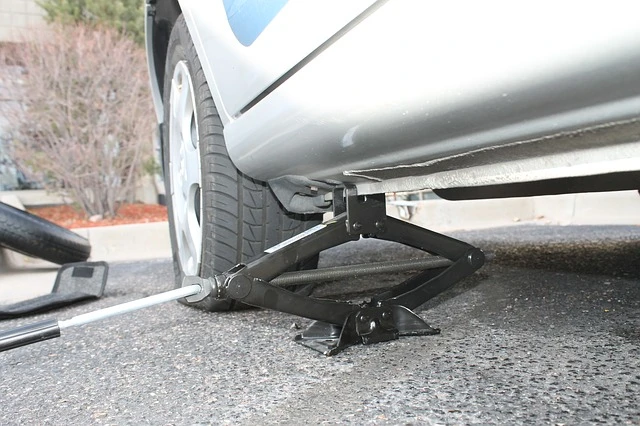Australia
VFACTS Releases January 2020 Sales Figures.
The Federal Chamber of Automotive Industries (FCAI) has today released the new vehicle sales figures for the month of January 2020. This has been done for the first time with an updated reporting system.
Total new vehicle sales were 71,731, a decrease of 10,263 sales compared to 2019. Of that number, passenger vehicles numbered 20,494, whilst SUVs made up 35,393, and LCV (Light Commercial Vehicles) 14,035. Passenger cars were down by 7,556 sales, and SUVs down by just 547 for the same time last year. LCVs saw a drop of 1,774. In percentage terms these equate to drops of 26.9%, 1.5%, 11.2%, and and overall drop of 12.5% for January.
The FCAI chief executive, Tony Weber, said: “Given the broad range of environmental, financial, international and political issues facing Australia during January, it is no surprise to see the new vehicle market has reported a conservative start to the year.”
Japanese giant, Toyota, topped the ladder with 14,809 sales, making Toyota have a 20.6% share of the market. Mazda slid into second with 6,695 for a 9.3% share. Hyundai was nipping at the heels of Mazda with 5,443 and 7.6%. Mitsubishi made 4th with 5,108 sales or 7.1% whilst Kia snared 5th with 4,705 sales and 6.6%.
Toyota’s Hilux, with 2,968 sales, took out the number 1 sales position. Ford’s Ranger claimed 2nd with 2,624 sales. Toyota also grabbed 3rd thanks to the Corolla, with 2,370 sales. The RAV4 from the same maker was 4th with 2,290 sale, followed by the Mitsubishi Triton with 2,075 sales.
Mr Weber said of the updated VFACTS reporting system: “VFACTS is the most accurate source of data for the automotive industry. The updated VFACTS system is working well and automotive brands have welcomed its release. The benefits of the new system include improved data accuracy and more timely reporting lines.
Sales Down, Safety Up, Toll Up.
Australians are renowned for being up there in regards to take-up of technology. We expect our cars to come with the latest and greatest when it comes to audio, comfort, and importantly, safety. Items like airbags are commonplace, with even the driver’s workspace seeing more and more of a “kneebag”. Traction control has been in our cars for what feels like forever as has ABS, or anti-lock braking system. Nowadays we see letters such as RCTA, or BSW/BSA as part of a standard safety package, and more and more common is variations on AEB. By the way, that’s Rear Cross Traffic Alert, Blind Spot Warning/Alert, and Autonomous Emergency Braking.
Regardless of all of these and with new car sales (with better safety equipment) consistently exceeding a million in recent years, the Australian road toll increased in 2019. 1182 people lost their lives in 2019, 47 up on the previous year. NSW saw 352, just six more than 2018 and in spite of the extra “safety” measures taken by a government desperately seeking “Towards Zero”. Given the focus on people dying from holding a mobile phone or speeding, and with over 100,000 people pinged in a six month mobile phone camera trial, and a potential removal of signage for mobile and fixed speed cameras, “Towards Zero” has more to do with the few idiots that commit such atrocities or think tailgating is a great game than the numbers reflect.
By the way, the mobile phone trial amnesty has finished and people caught will now get a fine of $344 and a more realistic but still potentially misguided five demerit points. This is in spite of statistics finding mobile phone distractions in crashes accounting for under one percent of causes.
Victoria, in spite of the razor thin tolerances their speed cameras have, went from 213 to 263 in 2019. In context, as of June 2019 Victoria had a population of 6,594,804. South and Western Australia had increases, with S.A. 6 and W.A. 33 to record 113 and 164 respectively. In opposition to that, Queensland, the N.T., Tasmania and the A.C.T. went backwards in their tolls. Queensland dropped by 28 to 217, with just 35 in “the Territory”, whilst the island state had 32. The capital territory? Just 6.
Car sales in 2019 were at the lowest since 2011 but still cracked the million mark. VFACTS said 1,062,867 new vehicles were sold in 2019. Bear in mind that the safety factors in cars is increasing, yet the human element, ignorance and stupidity, cannot be dialled out.
In stark contrast to the road toll is the sharp increase in hospitalisations. Victorian hospitalisations from a result of traffic crashes have risen 38 percent between 2013 and 2019. In the same period the road toll fell 12.3 percent. Australia’s federal Department of Infrastructure, Transport, Cities and Regional Development, says that over the last ten years the toll has fallen whilst road injuries have increased. 2016’s rate of hospitalised injuries per 100,000 people was 35 times the fatality rate. Traffic crashes are the second highest cause of hospitalisations in Australia, accounting for 12 percent, behind falls (41 percent). The 38,945 hospitalisations across the country in 2016 represent a nominal increase of 3.6 percent each year since 2015.
8636 hospitalisations occurred as a result of traffic incidents in 2018, compared to 213 fatalities. Six years before the numbers were 6252 and 243. Nationally in 2018 two thirds of fatalities were in regional areas, with two thirds of hospitalisations coming from urban crashes. The reasons for the disparity are unclear, however it could be postulated that as cars become safer and people feel that their driving standards, or lack of them, will be mitigated by the vehicle safety packages, more trust, as such in items such as AEB and airbags as driving standards lower will see more crashes resulting in people being sent to hospital.
Drug and Alcohol Detectors Could be in All Future New Cars
With the government already doing its best to regulate many parts of our lives, they may be just about to extend that one step further via drug and alcohol detectors in all future new cars.
Hot on the heels of speed limiters, which look set to become a standard item in the not too distant future, government officials are taking a liking to the guidelines set out by the United Nations for compulsory safety devices that should feature in all new cars.
Local interest comes as the European Union looks set to implement these guidelines as early as 2022. That’s right, in just a couple of years, drug and alcohol detectors may well become standard in every new car across Europe.
With the technology still under development, there is no ‘sure’ indication at this stage. However, with Australia often seen following in the footsteps of the international community for road safety practices, the odds are certainly pointing to a similar roll-out in Australia sooner or later.

Is there a societal dilemma?
Many motorists are likely to be shocked by the potential measure, with such requirements sure to draw the ire of those who value their driving flexibility and independence, without the state being required to intervene and tell them otherwise.
Sure, the intentions behind this sort of technology are positive. After all, as much as a quarter of all deaths on the road involve motorists under the influence of alcohol. No one is doubting the tragic circumstances that entail a vast proportion of road trauma connected to one form of illicit substance or another.
However, what is likely to be a point of consternation is the fact that law-abiding citizens will need to have the government effectively police them when they are already in control of their own actions.
https://www.youtube.com/watch?v=yykyT4YRw4A&feature=emb_title
How would the technology work?
Picturing the scene, by now you’re probably imagining some sort of breathalyser device that you would need to engage with every time you step into the car, right? Fortunately, the technology under development is expected to be far more sophisticated and ‘seamless’ than that.
It would rely on sensors affixed to the inside of the driver’s side door and on the steering wheel. These sensors, which would be configured to focus solely on the driver, would use infrared light to detect whether any ethanol or carbon dioxide is being picked up in the air from your breath.
But while this is the end goal, in the meantime, no one can say with any certainty that the government won’t instead opt for more ‘established’ technology in the form of those interlock systems, or sensor pads that assess the presence of illicit substances via ‘touch’.
But at the end of the day, with various pieces of technology under trial locally right now, it is looking less likely to be a case of if something will be done, and rather a case of when will the government intervene in our lives once again?
What Important Equipment Should I Keep in my Car?
Summer can be a prolific time for maintenance related breakdowns, what with the extreme temperatures around the country. Although we pray we’ll never find ourselves in a situation where we require roadside assistance, it’s wise to make sure that you are prepared for anything that could go wrong. Today we’ll cover some of the most important equipment you should keep in your car.
Dash cam: An increasingly common sight in vehicles across the board, dash cams are an invaluable item to record events on the road. In the event you find yourself in an accident, dash cam footage will prove crucial evidence as part of your insurance claim.
GPS: Although many cars these days will feature a built-in GPS, if yours doesn’t, then it is wise to invest in a standalone one to make your life a whole lot easier
First aid kit: Keep an up-to-date first aid kit in your car at all times. That might not be enough, however, as it also pays to be trained in administering first aid

Fire extinguisher: If you encounter a fire, even though your first actions should be to call emergency services, you may also want to have a fire extinguisher at hand as a precaution
Safety triangle: If you break down, safety triangles should be set up behind your vehicle to serve as a caution to other motorists, which also goes some way towards protecting yourself as well
Tyre kit: Flat tyres and punctures can be a major frustration, however, this is actually an easy job to tackle yourself. All you need is a spare tyre, and a tyre kit, which includes a car jack, wheel brace, tyre sealant and inflation pump.

Charging cables: Given everyone now depends on their mobile phone, you will want to ensure that you have charging cables at hand so that you don’t find your battery suddenly run flat
Spare tools: It is beneficial to have a basic took kit at hand, as well as water and coolant, spare petrol tank and pump, duct tape, jumper cables and more
Comfort items: Some of the most useful items you should keep are actually comfort items, including a blanket, umbrella, raincoat, sunglasses and the like. These are not only useful from one day to another, but in the event of a breakdown.